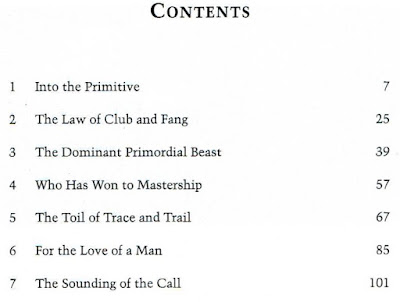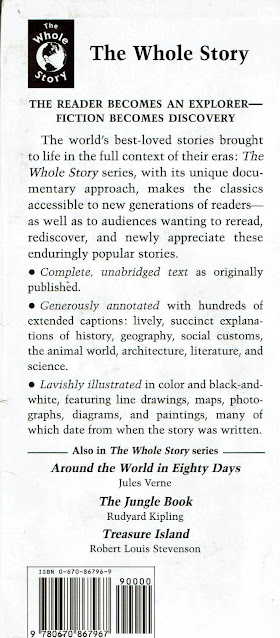The Call of the Wild's publication history is interesting per the Wikipedia entry about the book
I may not have liked the text of this book, but I was quite taken with the fine-line inked and colored illustrations, interpretations of what Jack London had described. Here are examples of sledding out in the wilderness, ambience in a mining town, bonding of man and dog, and answering back to the call of the wild. The fine detailing and the soft color nuances of the artwork drew me in.
Written as a frontier story about the gold rush, The Call of the Wild was meant for the pulp market. It was first published in four installments in The Saturday Evening Post, which bought it for $750 in 1903. In the same year, London sold all rights to the story for $2,500 to Macmillan, which published it in book format. The book has never been out of print since that time.The particular copy of the book I read contained illustrations by Philippe Munch. I am somewhat familiar with this French artist because my daughter in her middle school years loved Redwall and Philippe Munch was the books' cover artist and illustrator. Per the Redwall entry in Wikipedia.
Redwall is a series of children's fantasy novels by British writer Brian Jacques, published from 1986 to 2011

This particular version of the book also had photographs, notations, and facts along the side margins. I found them distracting while I was reading Jack London's text itself, but I went back after finishing the book to investigate them. Here are some examples of history details and wolf facts.
The back cover of this particular version of the book reveals it to be part of the Whole Story Series by Viking Juvenile, which according to Goodreads, sadly is out of print. I am glad I read this copy and I will be on the alert to find other titles in this series when I read a classic I missed in my younger days. There are fifteen titles on this list so I have found a future project for myself.
The remake of the movie The Call of the Wild with Harrison Ford came out near the end of February, 2020. The film got a 6.8 out of 10 rating on IMDB. I missed it probably because in March we began sheltering in place and social distancing due to the Coronavirus outbreak. Maybe others potential viewers did the same, contributing to the financial failure of the movie. Per the Wikipedia article about the movie
The Call of the Wild was released in the United States on February 21, 2020, by 20th Century Studios, the first film to be under the branding since the original 1935 film. It received mixed reviews from critics, who praised Ford's performance and the "entertaining action and earnest tone" but criticized the "uncanny" CGI of the animals. It was a box-office bomb, grossing $107 million against a production budget of $125–150 million, and lost the studio an estimated $50–100 million.
From what I read of the plot summary in Wikipedia, the movie appears to deviate greatly from the book. Harrison Ford plays the male lead role of John Thornton who does not even appear until Chapter 6 in the book. Based on the trailer, I still want to see the movie so perhaps we will stream it. To be sure I will be watching for that disclaimer in the end credits, "No Animals Were Harmed".
This is a long post for a short book I did not enjoy reading. Based on the Jack London text itself, despite it being a classic, I rate this book 1 star, translating to Awful but I read most or maybe even all of it. However, the particular version I happened to check out of the library had enough mitigating qualities that my efforts were not for naught. Artwork and history facts compensated for the cruel story. But when I consider this particular version with its extras, I rate it 4 stars, translating to Really good; maybe only one weak aspect or limited audience.
On average I give The Call of the Wild 3 stars, Better than average; not a waste of time. I can now check this classic off my "To-Read" list.








I don't recall reading this, either. My reading list is so extensive now that I think I'll wait to read it when the kids do in school.
ReplyDelete